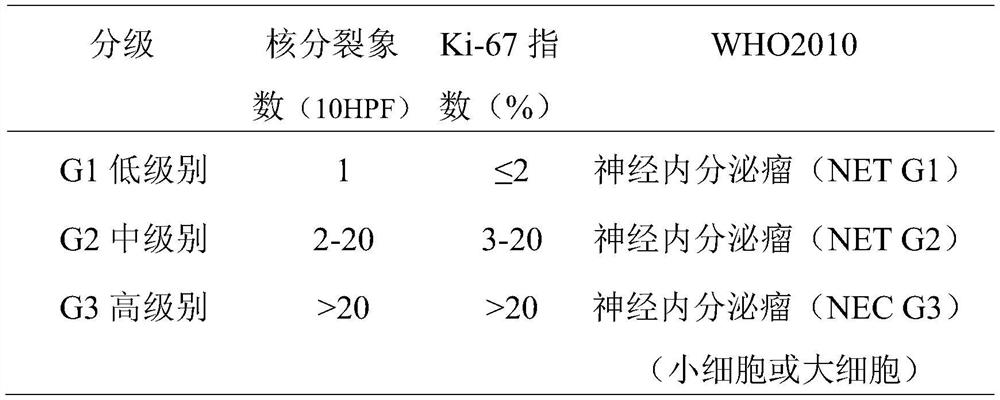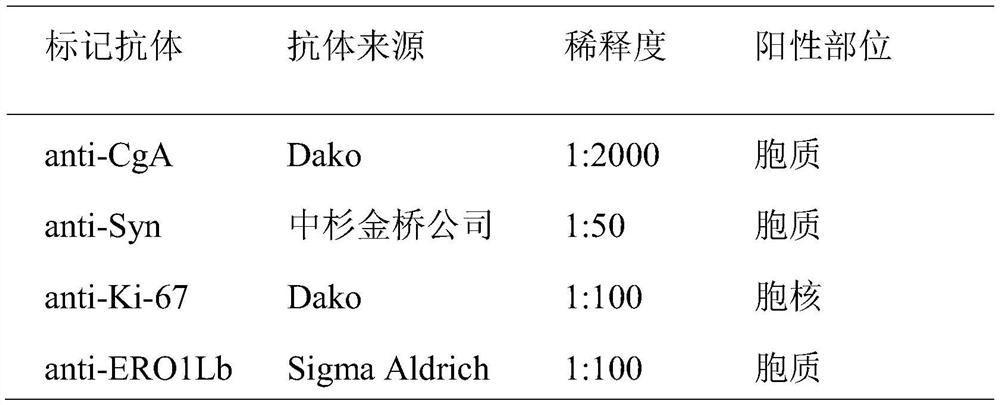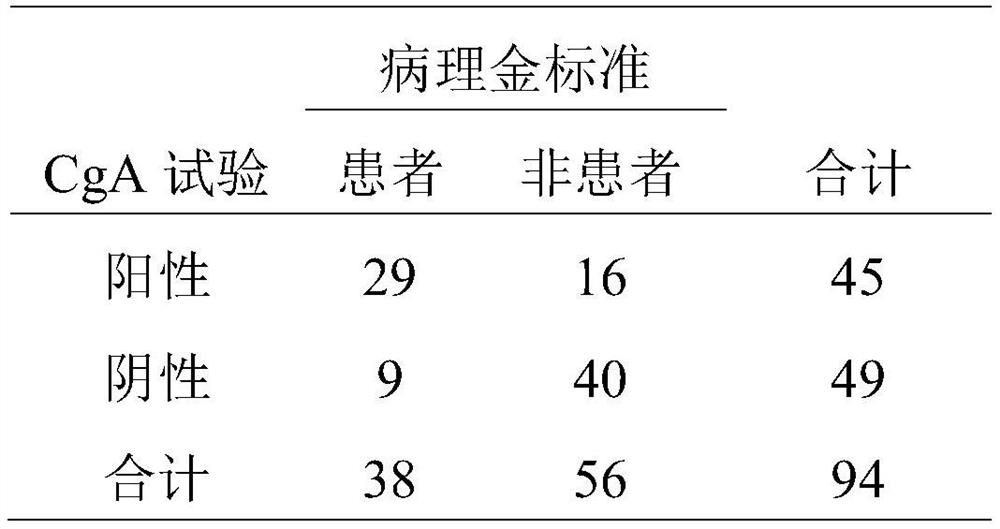Application of biomarkers in the diagnosis of neuroendocrine tumors of the small intestine
A neuroendocrine and small intestine technology, applied in the direction of analytical materials, instruments, measuring devices, etc., can solve the problems of low sensitivity and specificity of SI-NENs
- Summary
- Abstract
- Description
- Claims
- Application Information
AI Technical Summary
Problems solved by technology
Method used
Image
Examples
Embodiment 1
[0047] Comparison of Example 1 Plasma CgA Test and Pathological Diagnosis Results
[0048] Pathological results were positive in 38 cases and negative in 56 cases. Diagnosed with plasma CgA alone, 49 cases had negative results, including 40 cases of true negatives, 9 cases of false negatives, and 45 cases of positive results, of which 29 cases were true positives and 16 cases of false positives. See Table 3.
[0049] Table 3 Comparison of plasma CgA test and pathological diagnosis results
[0050]
Embodiment 2
[0051] Comparison of Example 2 Plasma Midkine Test and Pathological Diagnosis Results
[0052] Using plasma Midkine alone for diagnosis, 42 cases had negative results, including 34 cases of true negatives, 8 cases of false negatives, and 52 cases of positive results, of which 30 cases were true positives and 22 cases of false positives. See Table 4.
[0053] Table 4 Comparison of diagnostic results between plasma Midkine test and pathological gold standard
[0054]
[0055]
Embodiment 3
[0056] Example 3 Comparison of plasma DcR3 test and pathological diagnosis results
[0057] Diagnosed with plasma DcR3 alone, 45 cases had negative results, including 31 cases of true negatives, 14 cases of false negatives, and 49 cases of positive results, of which 24 cases were true positives and 25 cases of false positives. See Table 5.
[0058] Table 5 Comparison of diagnostic results between plasma DcR3 test and pathological gold standard
[0059]
PUM
| Property | Measurement | Unit |
|---|---|---|
| Sensitivity | aaaaa | aaaaa |
Abstract
Description
Claims
Application Information
 Login to View More
Login to View More - R&D
- Intellectual Property
- Life Sciences
- Materials
- Tech Scout
- Unparalleled Data Quality
- Higher Quality Content
- 60% Fewer Hallucinations
Browse by: Latest US Patents, China's latest patents, Technical Efficacy Thesaurus, Application Domain, Technology Topic, Popular Technical Reports.
© 2025 PatSnap. All rights reserved.Legal|Privacy policy|Modern Slavery Act Transparency Statement|Sitemap|About US| Contact US: help@patsnap.com



